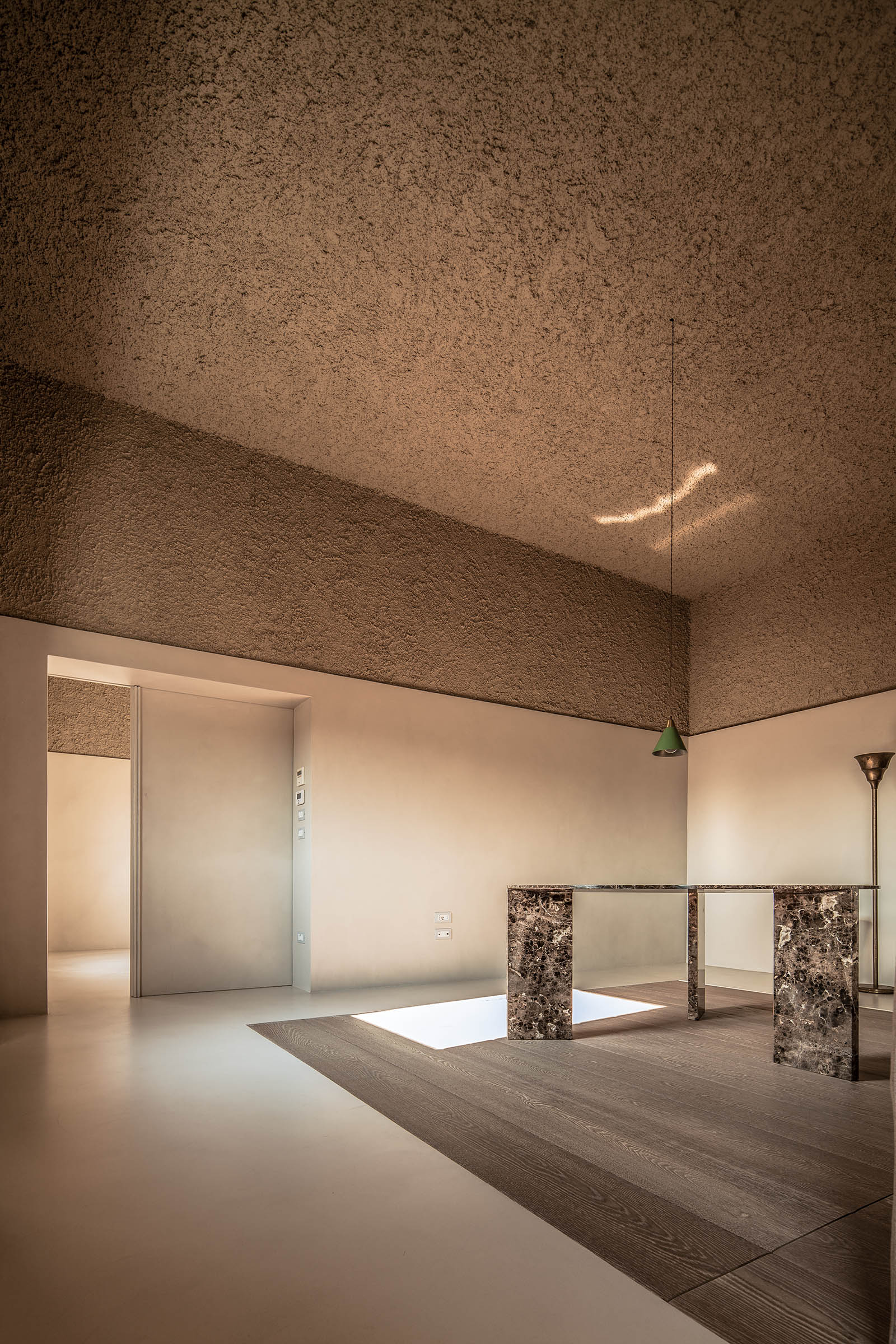Review
Amy Frearson
Italian architect Antonino Cardillo used roughly textured plaster to create lumpy brown surfaces across the upper walls and ceilings of this apartment in Rome.
Using the geometric ratio of the golden section, Antonino Cardillo designed House of Dust with a horizontal division that separates living spaces and furniture from the coarse plaster walls and ceilings above.
The architect wrote: ‘[I was] craving for primordial caverns, for Renaissance grotesques, for nymphaeums in Doria Pamphilj, for faintly Liberty façades in the streets off Via Veneto’.
Windows are sunken within deep recesses and together with a series of rectangular doorways they emphasise the line dividing top and bottom.
The architect also added a series of arched doorways, intended to reference fourteenth century Italian paintings, which conceal both rooms and cupboards.
One of these doorways features a pink glass doorknob that signifies the entrance to the master bedroom and bathroom, tucked away in the corner of the residence.
The rough plaster surfaces are missing from these spaces, where instead walls and ceilings are coloured in a pale shade of pink. There are also concrete washbasins and a cylindrical shower concealed behind a ghostly white curtain.
The kitchen surrounds the perimeter of the bedroom and can be screened behind a pivoting wall.
The living room is just beyond and features a wooden floor resembling a large rug. Furniture here includes small green tables designed by the architect, large grey sofas and a marble dining table.

Antonino Cardillo, House of Dust, Rome, 2013. Photography: Antonino Cardillo